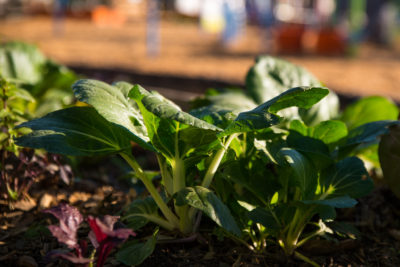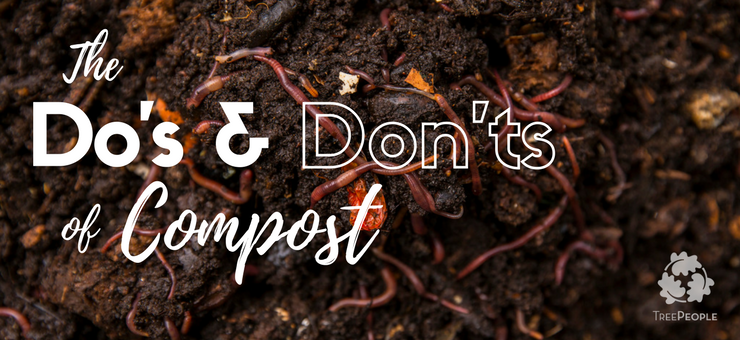Compost is a climate-appropriate garden’s best friend!
Compost offers tons of benefits for your landscape. It enriches the soil, delivers nutrients to plants and keeps water in the ground to help fight drought. Who knew healthy soil could do so much?
Compost is made from food scraps and organic matter, which contain lots of nutrients and water which would otherwise be wasted. In fact, 25% of our nation’s water is wasted on food that will be thrown out. Turning waste into rich compost is a great way to combat many environmental problems at once.
https://www.instagram.com/p/BbAftmBlKnh/?taken-by=treepeoplela
Want to get started? Grab a bin from LA County’s Smart Gardening program.
Here are a few simple DO’s and DON’Ts to remember:
DO apply compost on your edible garden.
Including 2 to 4 inches of compost to your soil will help your veggie garden grow and thrive! Dig it in before planting your seeds, or gently work around existing plants, being careful not to harm a plant’s roots.
DON’T apply too much compost around natives.
Most California natives do well with very little nutrition in their soil, so you don’t want to go overboard! In fact, too much compost could accelerate their growth and compromise their health.
Instead, use mulch! A nice 4-inch layer of mulch on top of your soil will enrich it without harming your plants. Or, check with The Theodore Payne Foundation to find out which natives need richer soils.
DO apply compost to trees.
Compost won’t only help your soil stay healthy–it’s also full of microbes that help retain water! Push back the mulch and apply a 2-inch layer of compost under the canopy, making sure to stay clear of the trunk. Then, replace the mulch on top. (P.S. A 4-inch layer of mulch is ideal.)
DO apply compost to dirt.
Dirt and soil are not the same.
Soil is the foundation for all life.
Dirt is soil that has been depleted of its benefits– but that’s okay. Dirt can be rehabilitated using compost!

Here’s how you can help.
Look for areas that are compacted and hydrophobic–in other words, where the water beads up instead of sinking in. Add 2 inches of compost and 4 inches of mulch. Want instant gratification? Consider adding wildflower seeds to create extra pathways into the soil, bringing in water and life and restoring our beautiful planet.
Want to learn more? Check out our handy how-to videos and printable resources on our DIY page!

